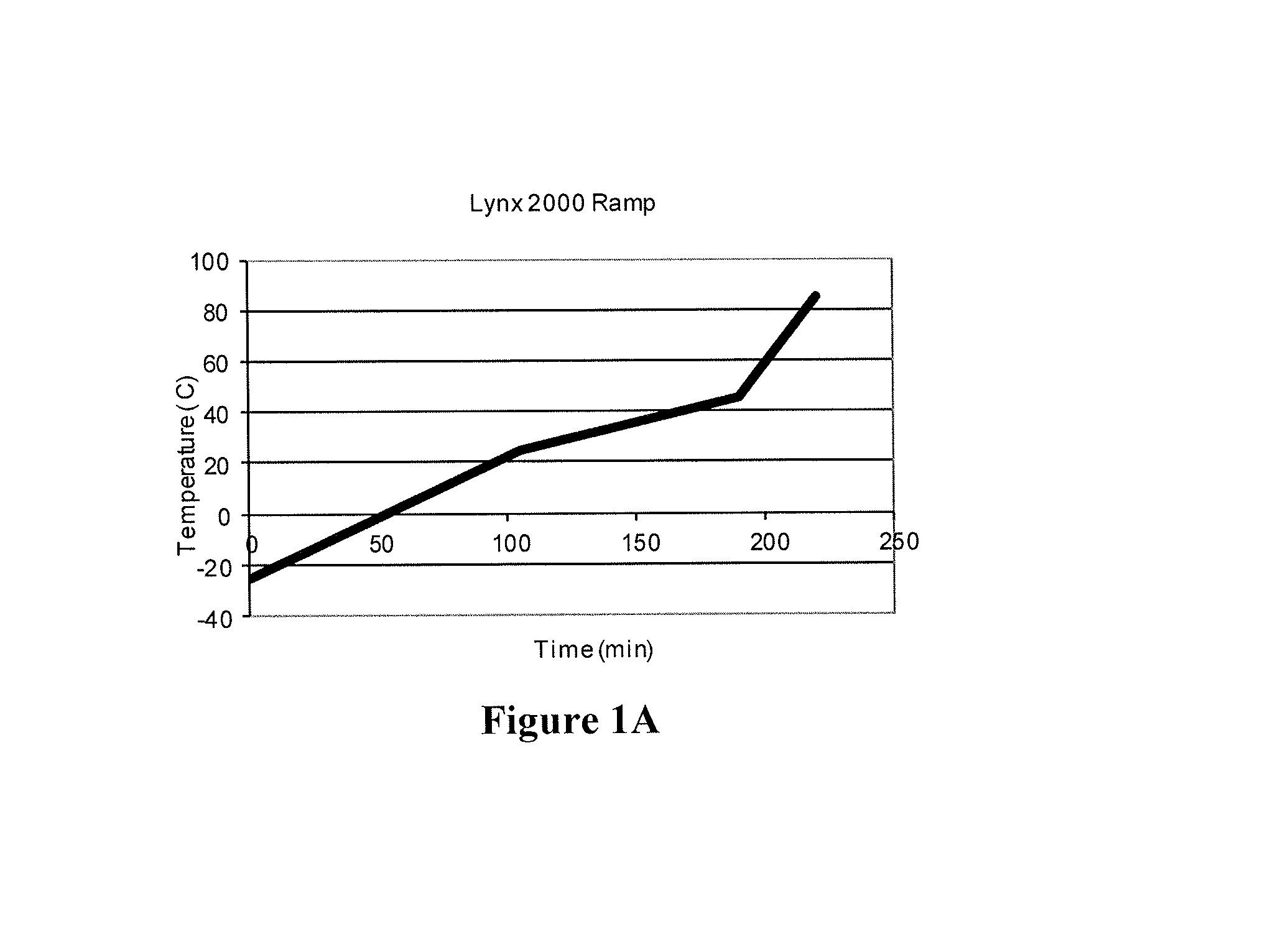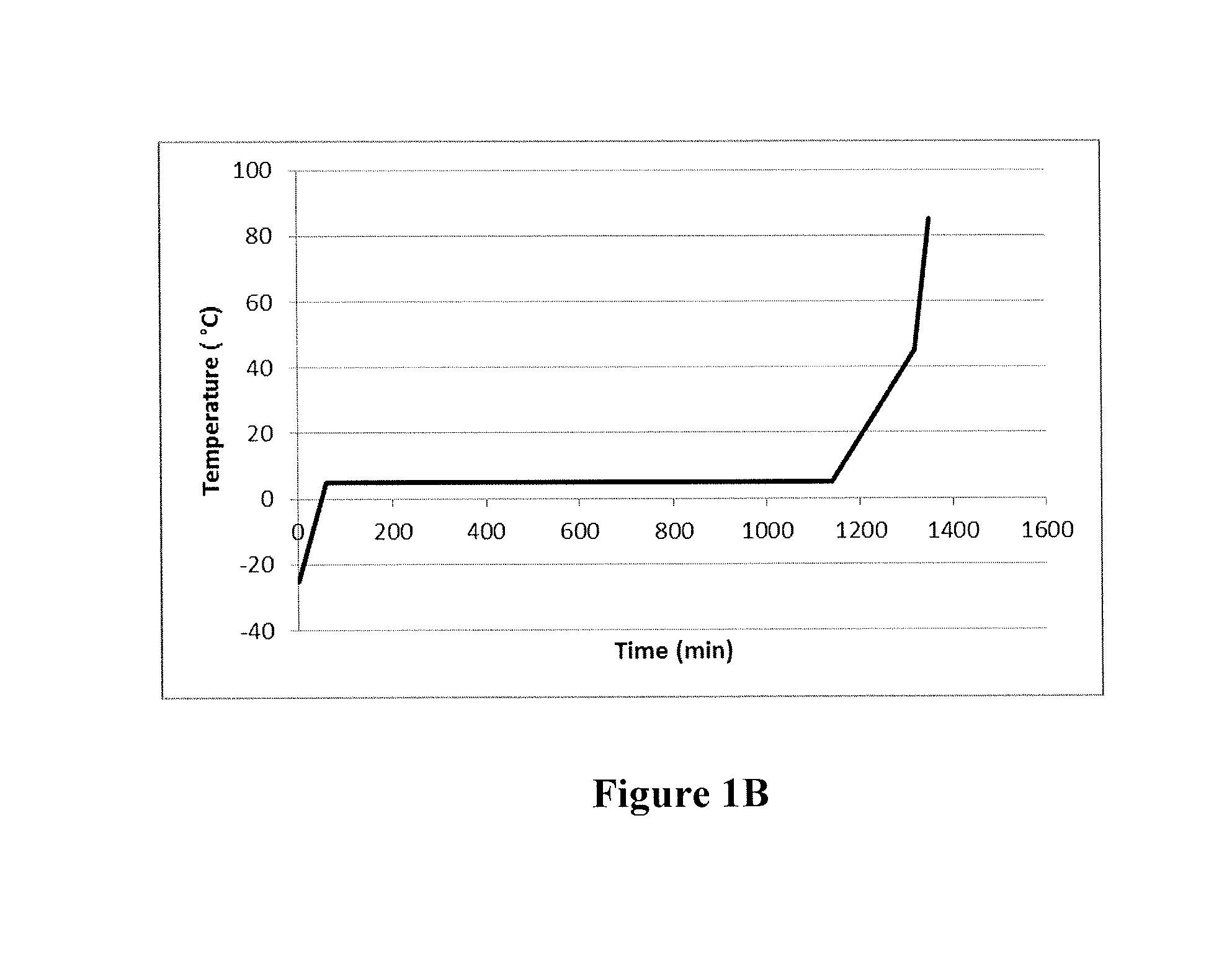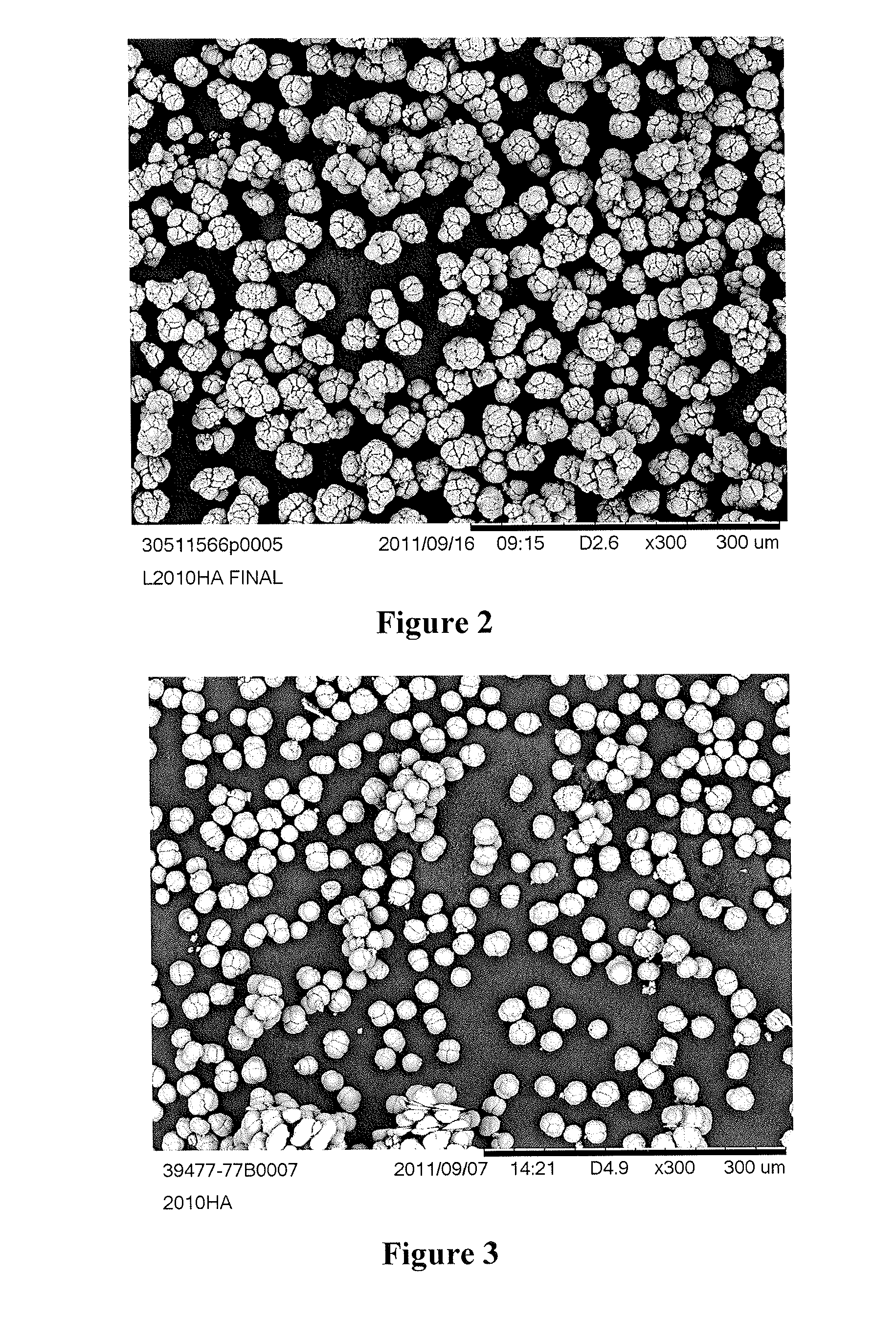Process of production of large and spherical polymerization catalyst and use of same in olefin polymerizations
- Summary
- Abstract
- Description
- Claims
- Application Information
AI Technical Summary
Benefits of technology
Problems solved by technology
Method used
Image
Examples
example 2
[0186]Example 1 was repeated except that the precipitation ramping profile was −10° C. to 5° C. The temperature was held at 5° C. overnight, followed by a ramp from 5° C. to 35° C. in 15 min, and a ramp from 35° C. to 85° C. in 15 min. The resulting catalyst particles are shown in FIG. 4.
examples 7-11
Effect of Holding Time / Temperature on Catalyst / Polymer Morphology
[0194]The catalysts were prepared as in Example 1. The holding time and holding temperature were varied. Ramp speed from holding temperature to 45° C. was 3 hours. The catalysts at holding temperatures in the range of 5-10° C. appear to provide the best polymer morphology. The morphology becomes less spherical and more like the Comparative Example 1 particles as one moves further outside of this range. The results are shown in Table 2. FIG. 6A shows a SEM of the catalyst of Example 9. FIG. 6B shows a SEM of the catalyst of Example 10.
TABLE 2Effect of holding time / temperature on catalyst / polymer morphologyExampletemp C.time hD50 μspand50 μSpanSPHT3Symm3B / l3Example 710247.00.9220970.490.870.890.77Example 810240.20.8518840.490.890.900.77Example 910444.41.2815610.590.900.910.79Example 1010637.90.6915100.490.910.910.80Example 1115443.90.8217960.430.900.890.77
examples 12-15
Effect of Ramping Speed from 5° C. To 45° C. On Catalyst / Polymer Morphology
[0195]The catalysts were prepared as in Example 1. The ramp duration was varied. The temperature was held at 5° C. for 6 hours. The ramping speed from 5-45° C. is critical for the morphology. Catalyst morphology becomes more like that of Comparative Example 1 with faster ramp speeds. Slower ramp speeds resulted in an improved morphology. The results are shown in Table 3. FIG. 7A shows a SEM of the catalyst of Example 14. FIG. 7B shows a SEM of the catalyst of Example 13. FIG. 7C shows a SEM of the catalyst of Example 12.
TABLE 3Effect of ramping speed from 5° C. to 45° C. on catalyst / polymermorphologyExam-RampplehD50 μspand50 μSpanSPHT3Symm3B / l3Exam-4.543.00.8416760.520.890.900.79ple 12Exam-3.043.00.8117360.470.910.920.80ple 13Exam-2.033.20.7614070.500.850.870.72ple 14Exam-1.027.10.9011930.600.810.860.72ple 15
PUM
| Property | Measurement | Unit |
|---|---|---|
| Temperature | aaaaa | aaaaa |
| Temperature | aaaaa | aaaaa |
| Temperature | aaaaa | aaaaa |
Abstract
Description
Claims
Application Information
 Login to View More
Login to View More - R&D
- Intellectual Property
- Life Sciences
- Materials
- Tech Scout
- Unparalleled Data Quality
- Higher Quality Content
- 60% Fewer Hallucinations
Browse by: Latest US Patents, China's latest patents, Technical Efficacy Thesaurus, Application Domain, Technology Topic, Popular Technical Reports.
© 2025 PatSnap. All rights reserved.Legal|Privacy policy|Modern Slavery Act Transparency Statement|Sitemap|About US| Contact US: help@patsnap.com



